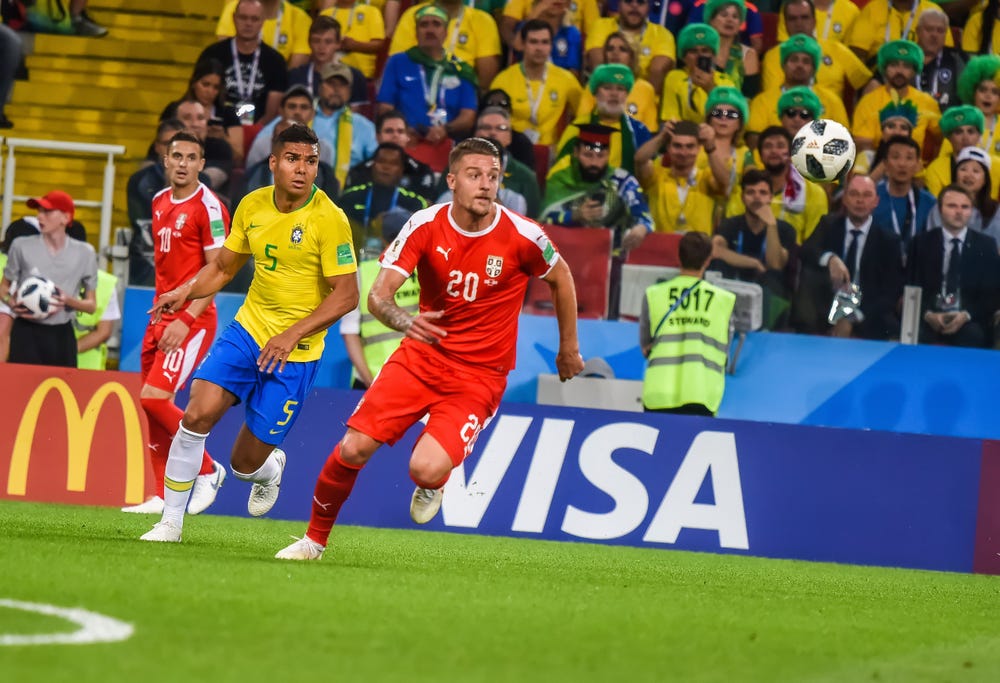World Cup preview: Serbia
The European nation is making its fourth appearance in five tournaments

Previous World Cup appearances*: 2006 (Serbia and Montenegro), 2010, 2018
*Serbia also made nine appearances as part of Yugoslavia
Best finish: Group stage (2006, 2010, 2018)
Group stage schedule: vs. Brazil (Nov. 24), vs. Cameroon (Nov. 28), vs. Switzerland (Dec. 2)
The breakdown
How they qualified: Serbia collected 20 points from eight games (6 wins, 2 draws) to top a UEFA qualifying group that featured Azerbaijan, Luxembourg, Portugal and the Republic of Ireland. Their 20 points were tied for the most in a five-team group (some groups had six teams).
Names to know:
Filip Kostić (Juventus) — Kostić was one of four players to get on the field in all eight of Serbia’s qualifiers and produced three total goal involvements (1 goal, 2 assists). He started the final two games at the last World Cup, logging 165 total minutes at the tournament. The 30-year-old registered 44 Bundesliga assists in four seasons with Eintracht Frankfurt before moving to Italian giants Juventus this summer.
Sergej Milinković-Savić (Lazio) — Milinković-Savić never came off the field at the 2018 World Cup and played every minute of the seven qualifiers he started. The dynamic midfielder was one of three players to reach double-figure goals and assists in Serie A last season. He should make his 250th Serie A appearance and record his 100th goal involvement for Lazio shortly after returning from Qatar.
Aleksandar Mitrović (Fulham) — Easily the most accomplished goalscorer in the history of the Serbian men’s national team1, Mitrović found the back of the net eight times in 528 minutes of playing time during qualifying. He scored an astonishing 43 goals to help Fulham win promotion to the Premier League last season and has scored 33 times in 116 career appearances in the English top flight.
Dušan Tadić (Ajax) — The only Serbian international with 90 caps and at least 15 goals2, Tadić has been a mainstay in the team since making his international debut in the fall of 2012. He tied for the team lead with eight goal involvements (2 goals, 6 assists) during qualifying and started every game at the last World Cup. Tadić returned to the Dutch Eredivisie with Ajax in the summer of 2018 and is averaging 1.08 goal involvements per 90 minutes in league games for the team3.
Dušan Vlahović (Juventus) — Vlahović has eight goals in 16 games for his national team4, four of which came during qualifying. He appeared in all eight qualifiers and started six of them. Scoring 17 times in 21 Serie A games for Fiorentina earned Vlahović a move to Juventus in the 2021 winter transfer window.
Potential breakout star: Strahinja Pavlović (Red Bull Salzburg)
Only two Serbian players logged more minutes during qualifying than the 21-year-old center back, who joined Salzburg from French club Monaco in the summer. Pavlović quickly established himself as a regular for his new club and started all six of Salzburg’s Champions League group stage games.
The bottom line
Reason for optimism: Added attacking depth
Milinković-Savić, Mitrović and Tadić were the only players who posed a consistent attacking threat in 2018. Adding Vlahović and a more experienced Luka Jović to the equation makes them much less reliant on one or two key players.
Biggest question: Is the attack improved enough?
Serbia finished with the worst goal difference (+9) of any team that won a UEFA qualifying group and the third-most goals conceded in their five-team group. They’re going to need more than the two goals they scored in 2018.
Here’s the deal:
They have the difference-makers to get out of the group and pull off an upset or two in the knockout stage. A lot needs to go right for that to happen though.



